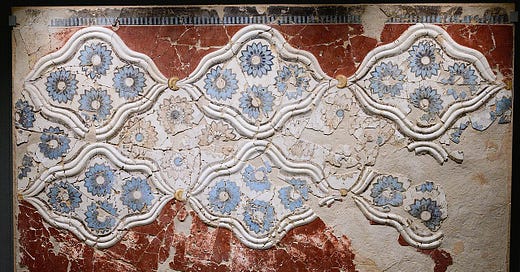One of the interesting aspects of a living spiritual tradition is that it changes. A living tradition based on the ancient world changes in very specific ways, often having to do with discovering new puzzle pieces.
Sometimes, the new puzzle piece is deity-shaped.
Sometimes it’s shaped like a piece of another deity.
I never said it wasn’t confusing.
In Ariadne’s Tribe, we have a saying: Individuation is problematic. It’s a (somewhat humorous) shorthand for the way the Minoan deities unfold from each other in kaleidoscopic fashion - beautiful but sometimes confusing.
Case in point, the deity who is the subject of today’s Minoan Path blog post: Potnia Chromaton (her name links to the post).
She’s an aspect of the fate goddess Arachne, who is the daughter of the Sun Goddess Therasia.
But there’s a sense in which the Mother and Daughter goddesses are aspects of each other - the Elder and Younger faces, if you will.
There was a time, not long before the Minoans, among their ancestors in Neolithic Anatolia, when there was a single mother goddess. We call her the One-Mother. She had many faces that eventually “evolved” into what we perceive as separate deities.
So where do you draw the line?
It’s largely a matter of practicality and personal preference. To me and most of us who have connected with her, Potnia Chromaton is not the same as Arachne. So we talk about them as two distinct goddesses. They have individual names that aren’t just epithets, so that helps.
Whether they really are separate is anybody’s guess.
We’re just human, after all.






Hi Laura ,
Your article is very interesting. I don't have an answer. I think all kinds of people called all kinds of goddesses different names at different points in time and perhaps they will continue to evolve and the traditional goddesses we know today may have different names 100 years from now. Who knows?🌹
Blessings, Juliette Ashmoon